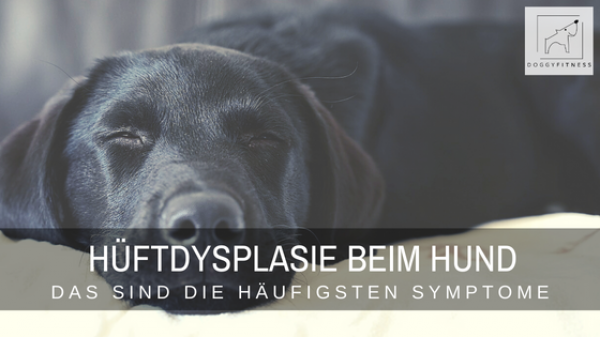Do you know the classic symptoms for hip dysplasia? Most dog owners have heard of hip dysplasia, as it is one of the most common joint diseases in dogs. Nevertheless, many dog owners do not know the signs of hip dysplasia – and so I often see four-legged friends who show obvious symptoms of HD. However, when talking to the owners, it often turns out that they consider their dog’s gait to be quite normal and healthy.
“He’s always run like that,” or “He can’t have anything, because he runs and plays normally. – these are statements that I then often hear. In any case, HD should be treated and dog owners themselves can do a lot to support their dog – if the disease has been diagnosed accordingly.
Therefore, I have summarized for you the most important symptoms for hip dysplasia. This is not about you diagnosing yourself, but a good eye for conspicuous behavior can help you recognize when something is wrong in a dog’s movement.
When can hip dysplasia be diagnosed in dogs?
Hip dysplasia can be detected in young dogs by x-ray. This should be routine, especially for dogs that you want to breed with, that are to be used in dog sports or as service dogs.
Unfortunately, the necessity is often misjudged and if the dog is only to do sports “for fun”, the x-ray is omitted. At the same time, a healthy musculoskeletal system is very important in any kind of dog sport!
What is hip dysplasia?
Hip dysplasia or hip joint dysplasia (HD for short) is a mostly congenital maldevelopment of the hip joint in which the head of the femur and the acetabulum do not fit together properly. It usually occurs on both sides, one side is always more affected.
The most common symptoms for hip dysplasia
- Affected dogs often have a pronounced hip swing or swaying gait – the so-called “LSÜ twist.”
- Dogs with HD also often show “rabbit hops”. This means the dog moves forward at a trot and canter, pushing off with both hind legs at the same time. Visually, this then looks like he is hopping like a rabbit.
- Tenderness to touch in the lower back/lumbar spine and hip.
- Dogs with HD often show difficulty standing up and lying down. This is often associated with vocalizations such as sighing and groaning.
- Showing classic signs of pain such as increased panting, smacking, groaning, sighing, spontaneous nibbling and licking of the hip.
- Lameness of various types from permanent lameness to intermittent lameness such as at the beginning of exercise, towards the end of a walk or every now and then.
- Everyday movements such as climbing stairs or getting into a car are difficult and are avoided. This is often dismissed as petulance or stubbornness – but the dog is in pain or simply too weak.
- In the course of the disease, the muscles in the hind legs become significantly weaker. In addition, tension in the overloaded areas of the body, such as the back and shoulder muscles, as well as the muscles of the front legs can be palpated.
- In many quadrupeds, one can notice weather sensitivity and a deterioration of health in damp, wet and cold weather.
- Dogs with hip dysplasia often sit at an angle and allow themselves to slide to one side in sit and down.
- Quadrupeds with HD show increased reluctance to move and lose the joy of playing with conspecifics and people. Behavioral changes can also occur and dogs become, for example, incompatible, aggressive, jumpy or fearful.
If your dog shows one or more of these symptoms, you should definitely have him examined by your veterinarian. The first signs usually appear at a young age. However, absence of symptoms does not mean that the dog is “HD-free”.
All the love, your Tina
Symptoms for hip dysplasia Symptoms for hip dysplasia Symptoms for hip dysplasia Symptoms for hip dysplasia Symptoms for hip dysplasia Symptoms for hip dysplasia
Dieser Beitrag ist auch verfügbar auf:
Français (French)
Deutsch (German)
Español (Spanish)
















